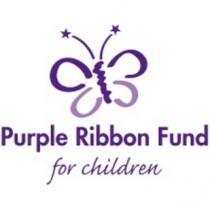Children bereaved by the death of one parent at the hands of the other, almost always the father, in effect lose both parents. The children are then uprooted, losing their home and, quite often, their familiar routine in essential relationships. The combined effects of trauma, dislocation and loss are dramatic, but little has been written so far about such tragedies and the implications for everyone concerned in the future of the affected children.”
(Harris-Hendriks, Black, & Kaplan, 1993, as quoted in Jaffe & Juodis, 2006).
In the event of intimate partner homicide or homicide/suicide, it is inevitable that the loved ones of both the victim and the perpetrator will experience intense and complex feelings of grief and loss. It is critical that domestic violence advocates recognize the importance of reaching out to families of homicide victims to offer support and/or provide referrals to appropriate services. Children of homicide victims, in particular, may experience a variety of complex and often conflicting emotions when it comes to the murder of their parent and their relationship with the perpetrator. The children often lose their home, neighborhood, school, and friends as they are placed with a new caretaker (in relatives’ homes, in crisis centers, or in some other type of housing arrangement, including foster or juvenile homes). They are seen in a new light in the community – labeled as a “child of a murderer” – and secondary traumatization may occur as the child learns details of the murder and re-live the crime, if she or he is called upon to testify in court (Lewandowski et al., 2004). It is critical to provide a sense of security and consistency to children who experience such trauma, and to offer long-term support and advocacy on their behalf.
Information specifically written to support family and friends of intimate partner homicide victims is, unfortunately, limited. Resources in this section describe common aspects of the grieving and mourning process, including information on common feelings that a young child may experience as part of that process. This section is intended to assist family and friends of homicide victims in their grieving process, including information related to talking to children about the death of a loved one, coping with grief during the holidays, and navigating the criminal justice system. For additional resources on grief and loss, please visit the National Alliance for Grieving Children, The Dougy Center for Grieving Children & Families, GriefNet.org, or Caring Connections, a project of the National Hospice and Palliative Care Organization.
"There is a need for services for children exposed to intimate partner femicide and attempted femicide that are not only offered but facilitated and encouraged with periodic outreach for these children. There needs to be systematic follow-up for these children, no matter where they eventually are placed, with communication with their schools and other agencies that come in contact with them. These programs should be conceptualized with a sense of urgency.” (Lewandowski et al., 2004)

The Purple Ribbon Council exists "to help bring hope, healing, and happiness to children who have lost a parent or both parents to domestic violence homicide." Their Purple Ribbon Fund for Children brings hope, healing and happiness to children of domestic violence homicide.
 The Highmark Caring Place, A Center for Grieving Children, Adolescents and Their Families, is dedicated to grieving children and families, supporting them in their journey toward hope after a loved one dies. HOPE the Butterfly was created as an awareness symbol to spread a message of hope to grieving children across the world that “it won’t always hurt so bad.
The Highmark Caring Place, A Center for Grieving Children, Adolescents and Their Families, is dedicated to grieving children and families, supporting them in their journey toward hope after a loved one dies. HOPE the Butterfly was created as an awareness symbol to spread a message of hope to grieving children across the world that “it won’t always hurt so bad.
 Comfort Zone Camp is a nonprofit bereavement camp that transforms the lives of children who have experienced the death of a parent, sibling, or primary caregiver. The free camps include confidence building programs and age-based support groups that break the emotional isolation grief often brings. Comfort Zone Camps are offered to children 7-17, and are held year-round across the country.
Comfort Zone Camp is a nonprofit bereavement camp that transforms the lives of children who have experienced the death of a parent, sibling, or primary caregiver. The free camps include confidence building programs and age-based support groups that break the emotional isolation grief often brings. Comfort Zone Camps are offered to children 7-17, and are held year-round across the country.









